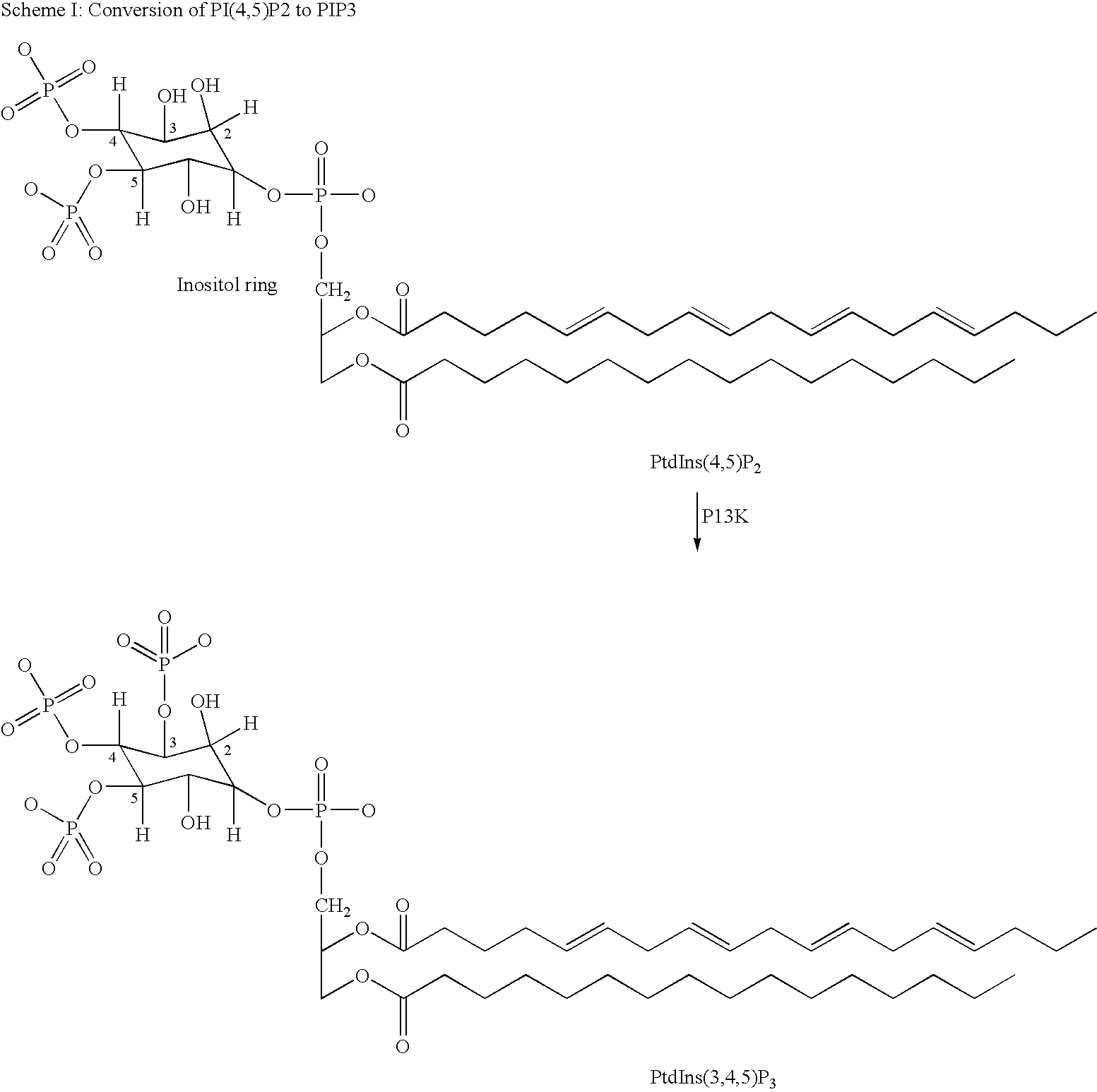Quinoline derivatives as p13 kinase inhibitors
a technology quinoline derivative, which is applied in the field of quinoline derivatives, can solve the problem of limited expression of p13 kinase inhibitor
- Summary
- Abstract
- Description
- Claims
- Application Information
AI Technical Summary
Benefits of technology
Problems solved by technology
Method used
Image
Examples
example 1
5-[4-(4-pyridinyl)-6-quinolinyl]-3-pyridinesulfonamide
[0632]
a) 6-bromo-4-iodoquinoline
[0633]Following the general procedure of Wolf, Christian et al. (SynLett 2003 12, 1801-1804), to a solution of 6-bromo-4-chloroquinoline (30 g, 0.124 mol) in anhydrous THF (500 mL) was added 2 M HCl in diethylether (74 mL, 0.148 mol). A white precipitate formed immediately. After stirring for 30 min, the suspension was concentrated in vacuo and dried under vacuum to provide 6-bromo-4-chloroquinoline hydrochloride as an off-white solid (34.6 g, quantitative yield).
[0634]A 3-neck roundbottom flask equipped with a reflux condenser and mechanical stirrer was charged with 6-bromo-4-chloroquinoline hydrochloride (34.6 g, 0.124 mol), anhydrous sodium iodide (92.93 g, 0.62 mol) and propionitrile (1 L). The resulting slurry was stirred vigorously at reflux for 96 hrs. The solution was cooled to room temperature and 500 mL of 10% K2CO3 solution was added, followed by a 200 mL of a 5% sodium sulfite solution....
example 107
6-[5-(methylsulfonyl)-3-pyridinyl]-4-(4-pyridinyl)quinoline
[0640]
[0641]A mixture of (6-bromo-4-(4-pyridinyl)quinoline (250 mg, 0.88 mmol), 5-methylsulfonyl pyridine-3-boronic acid (201 mg, 1.0 mmol), tetrakistriphenylphosphine palladium(0) (104 mg, 0.09 mmol), and sat. aqueous NaHCO3 (1.75 mL), in dioxane (5 mL) was heated at 110° C. for 1 h then cooled to room temperature. The rxn was filtered through Celite and Na2SO4 onto silica and the crude product was purified by column chromatography (5% EtOAc / Hex-10% Ethanol / EtOAc; 30 min gradient). Evaporation and precipitation from MeOH / water (2 / 98) provided the title compound as a yellow solid. (160 mg, 50%). ESMS [M+H]+=362.1
[0642]The following compounds were or can be prepared following the general procedures used to prepare the compound of Example 107:
MS(ES)ExampleStructure[M + H]+1083231092841102841112851125271133911143131153131163141173171182851193011203441213821223691233181243281253851264121273681283131293021303101313131323091333131...
example 139
2-amino-5-{4-[3-(aminosulfonyl)phenyl]-6-quinolinyl}-3-pyridinesulfonamide
[0643]
[0644]A mixture of 4-iodo-6-bromoquinoline (1.18 g, 3.53 mmol), 3-(4,4,5,5-tetramethyl-1,3,2-dioxaborolan-2-yl)benzenesulfonamide (1 g, 3.53 mmol), dichloro-[1,1′bis(diphenylphosphino)ferrocene]palladium(II)dichloromethane adduct (177 mg, 0.176 mmol), 2 M potassium carbonate (5 mL), in dioxane (15 mL) was heated at 100° C. for 1.5 h and cooled to room temperature. LCMS indicated the reaction was finished. To the finished reaction was added 2-amino-5-(4,4,5,5-tetramethyl-1,3,2-dioxaborolan-2-yl)-3-pyridinesulfonamide (1.2 g, 4 mmol), Dichloro-[1,1′bis(diphenylphosphino)ferrocene]Palladium(II)dichloromethane adduct (177 mg, 0.176 mmol), and 2 M potassium carbonate (5 mL). The reaction was heated at 100° C. for 3 h and cooled to room temperature. The dioxane and water were separated and the dioxane evaporated to get the crude product which was purified on silica gel eluting with ethyl acetate / methanol, 0-3%...
PUM
| Property | Measurement | Unit |
|---|---|---|
| volume | aaaaa | aaaaa |
| pH | aaaaa | aaaaa |
| temperature | aaaaa | aaaaa |
Abstract
Description
Claims
Application Information
 Login to View More
Login to View More - R&D
- Intellectual Property
- Life Sciences
- Materials
- Tech Scout
- Unparalleled Data Quality
- Higher Quality Content
- 60% Fewer Hallucinations
Browse by: Latest US Patents, China's latest patents, Technical Efficacy Thesaurus, Application Domain, Technology Topic, Popular Technical Reports.
© 2025 PatSnap. All rights reserved.Legal|Privacy policy|Modern Slavery Act Transparency Statement|Sitemap|About US| Contact US: help@patsnap.com



